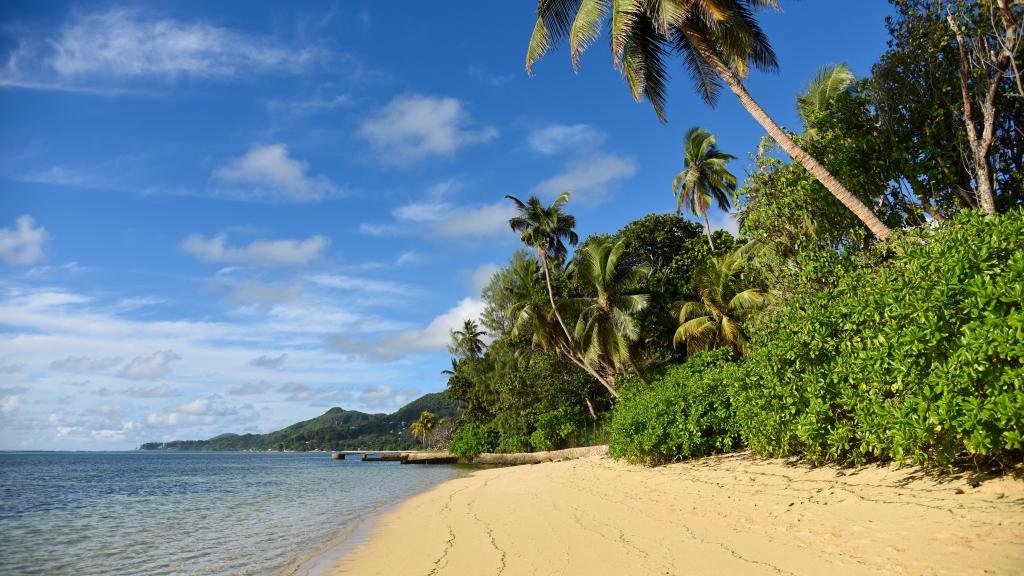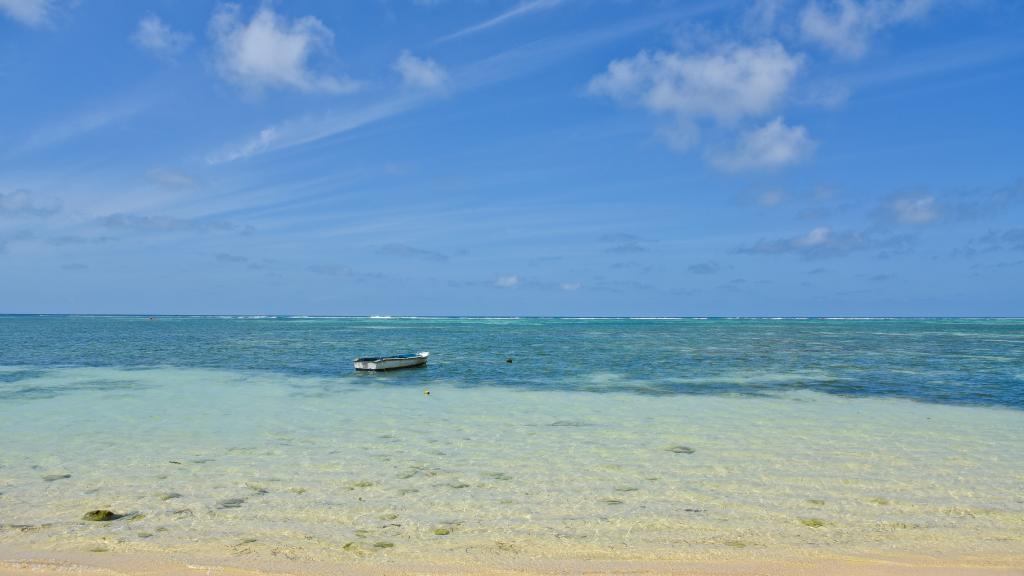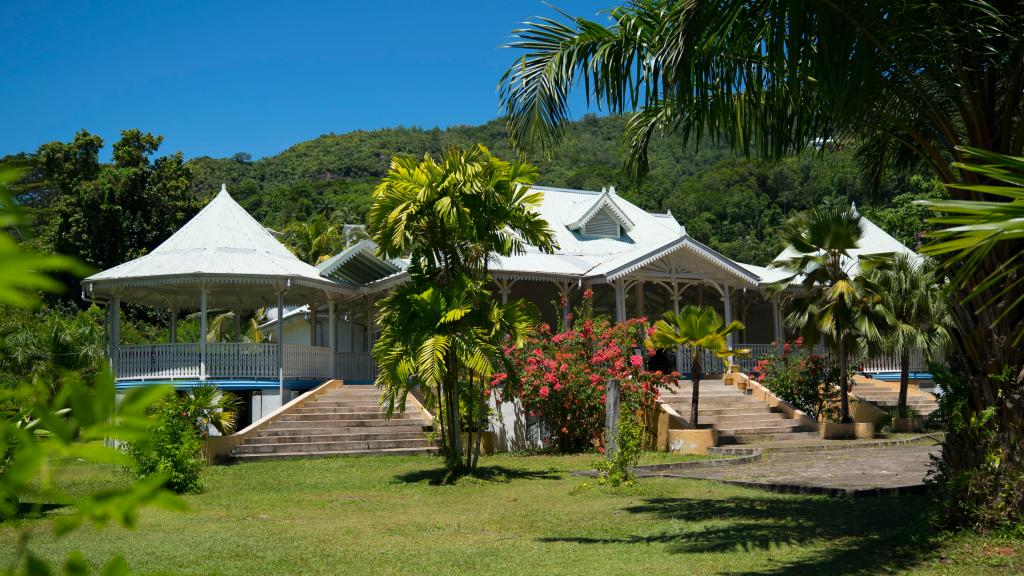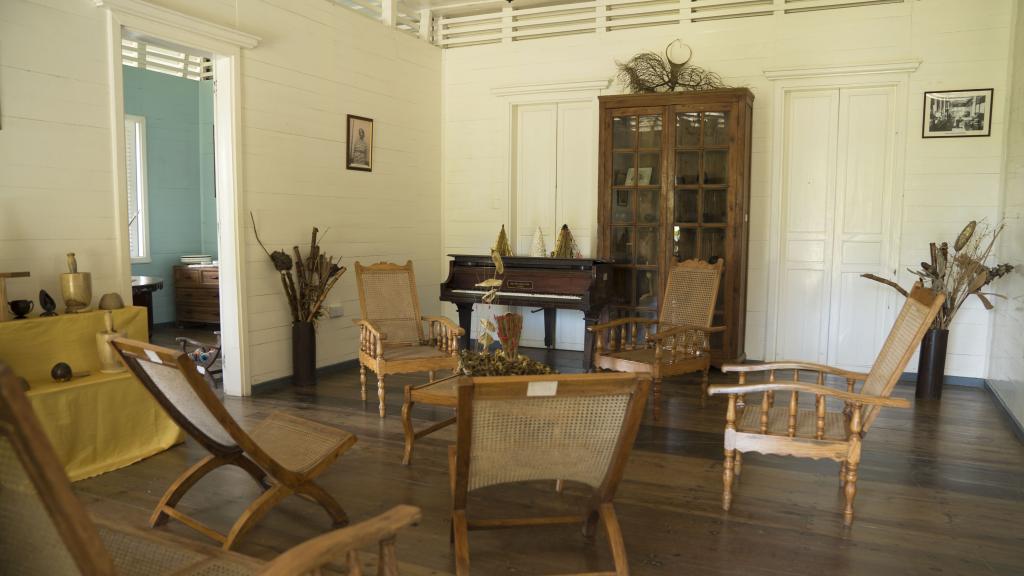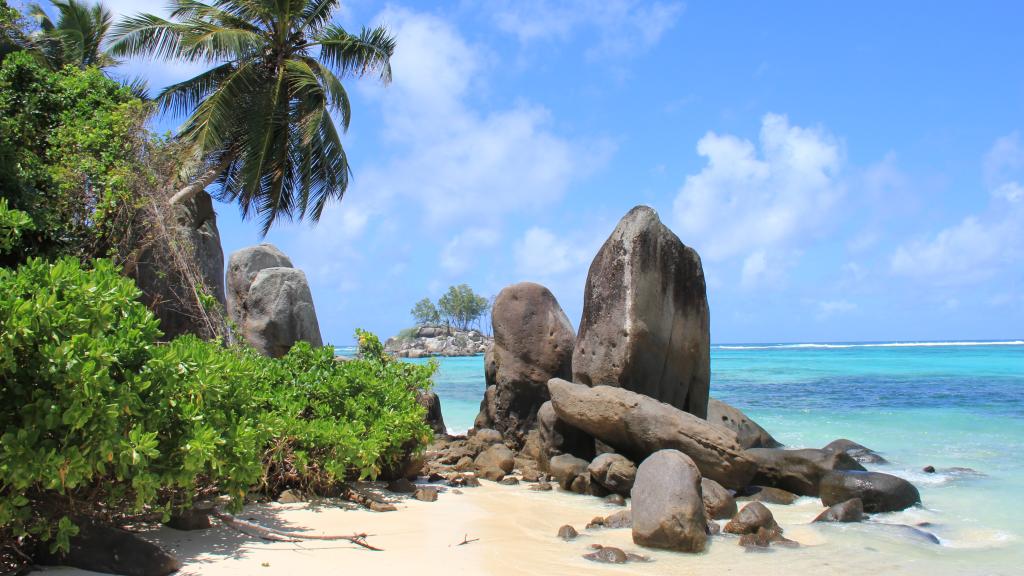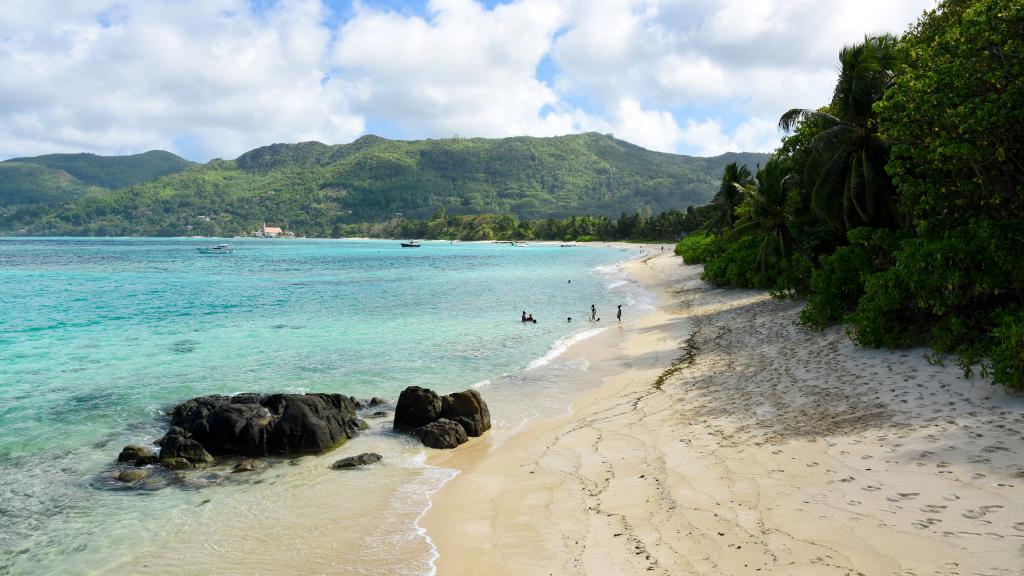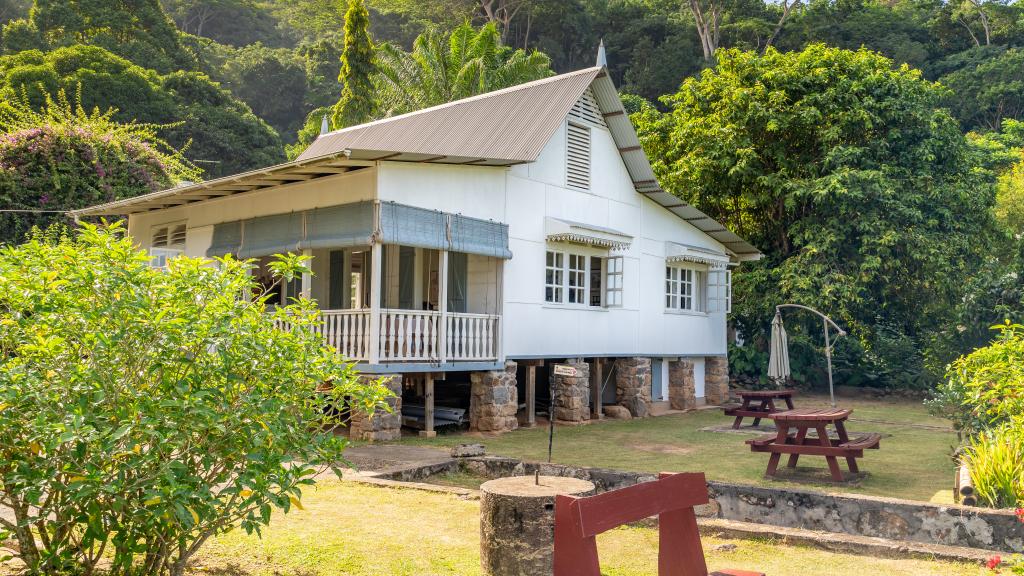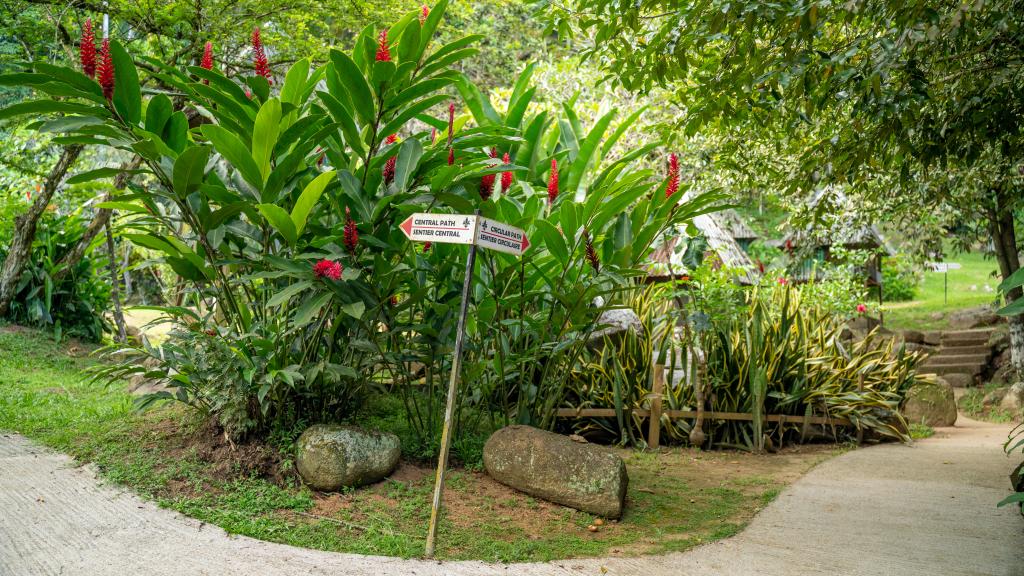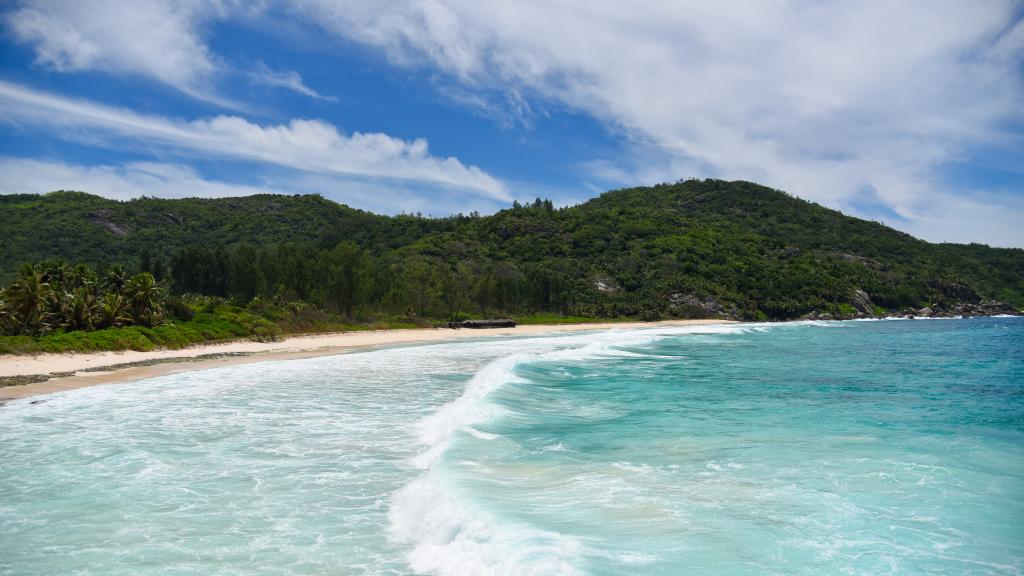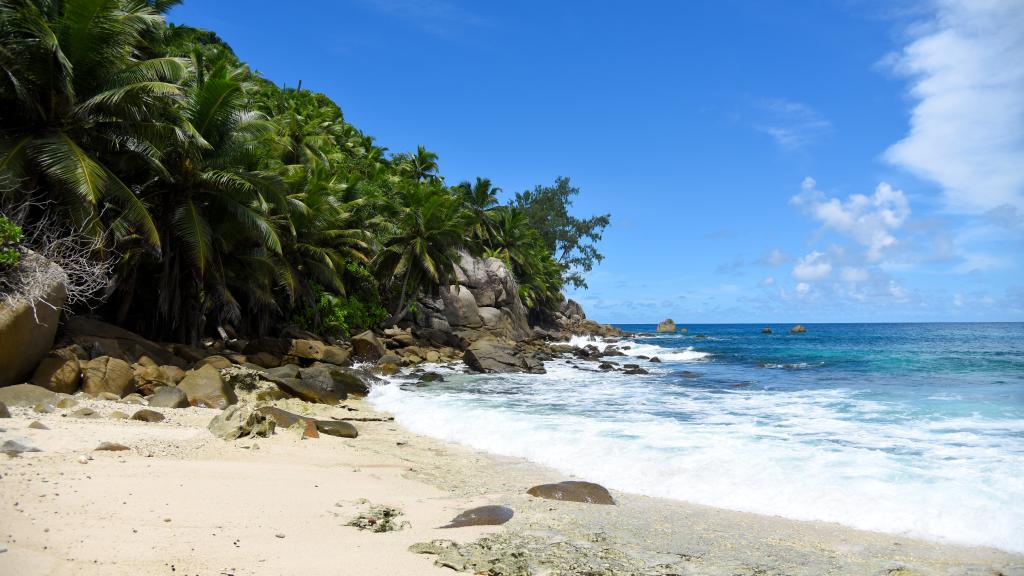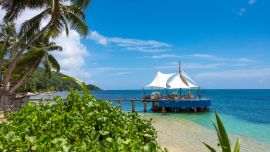The South of Mahé
Attractions and Activities in the South of Mahé
The island's airport acts as a sort of divide between the north and the south of Mahé, with the latter beginning roughly level with Anse aux Pins, the second-largest town in the Seychelles. The Seychellois call the south of the island 'Owan', which roughly translates from Creole as 'on the wind' or 'from where the wind comes' ('au vent' in the original French). Islanders who originate from Owan are sometimes even referred to as backwards. In reality, the south simply has a different atmosphere to the north of the island, feeling less busy and more contemplative. Here, time takes on its own meaning! In addition, there are numerous beaches where you can enjoy long, relaxing days in peace.
The South-East Coast of Mahé
Anse aux Pins
For those who want to take a tour of the south of Mahé, a whole day is usually enough time. Taking the four-lane motorway on the east coast, drive in a southerly direction past the airport and into the southern half of the island. The coast here is initially a little monotonous before reaching the seafront and Anse aux Pins, a 5 km (3 mile) bay after which the nearby settlement is named. This whole stretch of coastline is characterised by a coral reef and shallow, sloping beaches. Here, you can take a walk at low tide, with swimming only really possible at high tide. Observe fishermen as they go about their daily work in spots where the reef recedes, setting traps to catch various marine animals such as squid. The nearby village offers banks, several shops, and a petrol station, and there are also a number of small hotels and guesthouses here.
The Seychelles Golf Club may not be particularly new, but this nine-hole course is the only one that can be found on Mahé. The course winds through and under palm trees, so the "Warning: Falling Coconuts" signs should certainly be heeded.
Anse aux Pins is home to a few unique features, including two country-famous football clubs, as well as the Katiolo, one of the oldest nightclubs in the Seychelles. The club, which is especially popular with locals, is open from 21.00 - 3.00 on Wednesdays, Fridays, and Saturdays, and offers a partially open-air dancefloor.
Creole Institute
A cultural attraction of the region is the Creole Institute, whose purpose is to explore and maintain Creole culture. The Maison St. Joseph, which was designed in 1920 by a German architect, is a colonial mansion that houses Seychelles Creole literature, written in the native Creole tongue, Kreol Seselwa. Admission is free, open Monday to Friday, from 08:00 to 16:00
Seychellois Creole is the native tongue of approximately 90% of the local population, and arose from the French of the first colonisers, as well as different elements taken from African slaves at the time. The resulting Creole culture that developed is an essential part of the Seychellois identity in modern times. In 1976, when the country gained its independence from the United Kingdom, the young state decided to take on Creole as its official language, with the law passing in 1981. As a tourist, you will probably encounter this language in strange-looking French on various signs, banknotes, and stamps.
Linguists have been working and are still working to create a formal written linguistic form for the Creole language so that it can be used as an official written language. Over the course of time, textbooks have been created so that children can be taught in Creole as an official language. German linguist Annegret Bolée of the University of Heidelberg has also worked on this topic, defining correct spelling for the language, while two local scientists created a dictionary (the Diksioner Kreol Fringe) in the 1980s, which Bolée supplemented in 1999 and reissued.
The Maison St. Joseph was originally constructed for plantation owner France Jumeau. Following his death, his spirit is said to haunt the building, so there was no buyer for a long time. Finally, the state bought and renovated the property, declared it a protected building, and chose it as the location for the Creole Institute. Numerous exhibitions, music concerts, literary evenings, workshops, and international scientific symposia are held here too. All in all, around 10 million people speak variants of Creole globally, spread across the Seychelles, Mauritius, Réunion, southern USA states, and the Caribbean.
Le Domaine de Val des Près
The small Artisanal Village (also known as the Craft Village or Le Domaine de Val des Près) is located just a few hundred metres away, and can be reached by following a small side road. Local artisans and artists work on their designs at this location, and also sell their products here, as well as live in the village.
The project was funded in the 1980s by the US government for the local artisans, and its main purpose was and remains to be the preservation of the buildings of the former plantation The workshops contain many different works of art and craft objects, including jewellery, clothing, soap, and hats. In 1870, the largest of the houses in the village was built, the Grand Kaz, which was the former plantation house. Nowadays, this is home to a museum, where you can see very clearly how the lives of the white upper class were (the so-called 'Grands Blancs').

Trois Frères Rum Distillery
Also in the region is the Trois Frères Rum Distillery, where you can taste the rum specialities that are distilled on-site. In fact, seeing the rum being made is a real treat: after sugar cane is crushed in a sugar for its juice, the liquid is fermented for four or five days in tanks. After repeated distillation, the essence of this is stored in oak barrels. Rum aficionados can try five different on-site varieties.
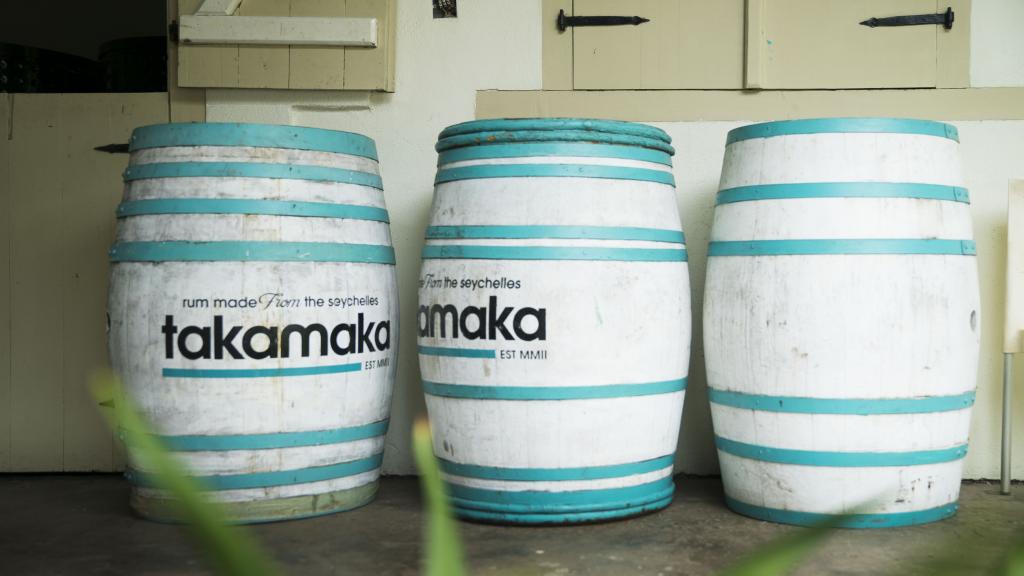
The adjacent restaurant La Plaine St. André offers a Creole atmosphere and a variety of local cuisine (open Mon - Sat: 10.00 - 00.00). The restaurant is located within an old planter house that was stylishly-renovated in 2007, and is nowadays considered one of the best-preserved colonial houses in the Seychelles.
Mon - Fri: 11.30 and 13.30, admission SCR 150
Anse Royale
If you drive from Anse aux Pins heading further south, the road rises up after a short time and leads out to a small ridge. From here, you can enjoy a unique view of the south-east coast, down towards Pointe Capucins at the southern tip of Mahé. Before that, you can see Anse Royale, the 'Royal Bay', and the small town of the same name.

In this flat region on the south-east coast of the island, settlers once built spice plantations which these days should be flourishing beacons of industry. Unfortunately, they were completely destroyed by a fire, which also caused the first colonisation effort of the Seychelles to fail.
The Jardin du Roi (Garden of the King) is not only a botanical attraction, but also continues the traditions of the former spice garden. You can reach the area by taking the Les Cannelles route behind Anse Royale, and then taking Sweet Escoot Road on the left after 1 km. There, you can see a rather discrete sign after 200 m (656 ft) or so, after which you have about two more steep kilometres to go.
Once you arrive at the top of the climb, you will see a rustic, hilly property, surrounded by tall trees. Covering an area of 25 hectares, the Jardin offers spice plantations, a botanical garden, and sanctuaries. The family who currently own the Jardin have committed a lot of time to the project, taking the 1770s Jardin du Roi as an example. The family even suggests that their ancestor was a certain Monsieur Poiret, who arrived in the Seychelles in the 19th century. If this is true, the blood of the French royal family would flow through the veins of the current owners, and the garden would rightly bear his name as the 'Garden of the King'.

Every day, between 10.00 and 17.30, guests can learn about the various spices grown in the Seychelles, including cinnamon, vanilla, cloves, pepper, nutmeg, coffee, and cocoa, as well as various flowers such as hibiscus and heliconias. It is also interesting to see the medicinal plants and collection of fruit trees that grow here, including pineapple, mango, orange, apples, and soursops. Native trees and palms, including the coco de mer palm tree, completing this rich collection. Some raw materials are even processed directly on plantation grounds, and the resultant products are sold alongside souvenirs in a small shop. Besides that, other ingredients are used in the kitchen of the Creole garden restaurant, where guests can enjoy cosy dining from 12.00 until 16.00.
The historic farmstead also houses a small museum with furniture, historic maps, prints, and other artefacts. For the Jadrin du Roi's inhabitants, a group of giant tortoises, there is a conservation and breeding programme in place. The oldest of the group is already over 100 years of age, and weighs approximately 250 kg (550 lbs). The Jardin du Roi is surrounded by a dense rainforest, which once contained the original plantation, but these days is overgrown.
The Southern Tip of Mahé
The southern edge of Mahé is the least-developed part of the island, and extends from the south end of Anse Royale, around the southern tip, to Anse à la Mouche in the east of the island. In fact, south of St. Joseph's Church on Anse Royale, only wild natural landscape follows, with Anse Baleine, Anse Bougainville, and Anse Parnel scattered along the coastline.
Anse Forbans and Anse Marie-Louise
1 km south of Anse Bougainville lies the long beach of Anse Forbans, then Anse Marie-Louise. These two bays are the southernmost on the island, and are almost completely undeveloped. That said, there are a few guesthouses here, allowing you to spend your holiday relaxing in solitude. Old maps call this area Pirate's Bay, as this was historically a strategically-beneficial place for pirates to berth.


Anse Intendance
Whether you take in this 'extra tour' or not, the road itself curves around to the Quatre Bornes, where there isn't much to see except for a church and some small shops. From there, it's just a short way to Anse Intendance. It is not advisable, however, to drive straight through to the bay, but rather take a left to Grande Police Road and follow this down to the end. Following this trail will take you down to the beautiful beaches of Petite Police and Police Bay.
At the church at Quarte Bornes, take the road to the west in order to reach the beach of Anse Intendance, a 1 km-beauty that ranks among the most incredible beaches in the world. In terms of size and length, only Beau Vallon is larger on Mahé, but for seclusion, Anse Intendance wins every time (except perhaps at the weekend).

Anse Takamaka
From the Quarte Bornes, you can also follow the east-west link road. Along this way, you will come across the bay of Anse Takamaka, protected from the wind and the waves most of the year, which many Seychelles experts suggest is even more beautiful than Anse Intendance. Whatever the case, these are both examples of the variety and charm of the south of Mahé, which add up to ensure that a visit to the area is well-worth it for any Seychelles holidaymaker.
This bay, which takes its name from the trees that line the edge of the sand, is also framed by classic Seychelles granite formations, and is perfectly-suited for a relaxing afternoon before dining at the Chez Batista restaurant, located on the beach itself. Here, visitors can enjoy snacks, grilled fish, or a Creole buffet on Sundays.

Baie Lazare
The picturesque Anse Takamaka is followed by the horseshoe-shaped Baie Lazare, and the village of the same name, both of which are named for the first French from Mauritius, Captain Lazare Picault, who was sent to the Seychelles in 1742 to determine whether settlement was possible and, after, to successfully establish a colony. Today, the name serves as a modest reminder of the former explorers of the island, as does the name of the island, which was taken from former governor Mahé.
The historical consensus of Picault is that he actually landed further north in Anse Boileau, but the name has stuck regardless, and also applies to the nearby village. Baie Lazare village covers the centre of the bay, and contains a school, café, gas station, and a small police station. There is also a small artists' village that has emerged here, with local painter Gerard Devoud operating his gallery here, where he displays landscapes and portraits of people.
The attractive landscapes of the peninsula that extends from Baie Lazare towards the west have already been used extensively as the site of quality accommodations, for example the Kempinski group, ensuring holidaymakers have plenty of choices to insert some colonial flair into their holidays.

Anse Soleil, Petite Anse & Anse Gouvernement
Starting at Baie Lazare, past the police station on the left, another trail leads to some other nearby bays: Anse Soleil, Petite Anse, and Anse Gouvernement. The last part of this road however consists of narrow slopes, so when driving to Anse Soleil, make sure you always have one foot on the brake pedal! For those who successfully navigate this road, however, the reward is a beautiful picturesque bay next to a fine sandy beach, a small guesthouse, and a restaurant.

Petite Anse is home to more up-market holiday accommodation, such as the luxury Four Seasons hotel, which boasts an excellent location at the heart of a lush tropical garden, just a few hundred metres from the shore.
The furthest you can go on this road is Anse Gouvernement, but this detour is certainly worth it if you're looking for a secluded, unspoilt beach. On the way, you will pass a few art studios, with Italian sculptor Antonio Filippin creating objects from coral and wood, and Brit Andrew Gee living here in his self-designed house and studio.
Anse aux Poules Bleues
Rejoining the western coastal road in the direction of Anse à la Mouche, you will pass by Anse aux Poules Bleues (literally, the 'Bay of Blue Chicken'). The main attraction here is the studio owned by English painter Michael Adams. Tucked away to the left of the road is an old but lovingly-maintained colonial house, of which the studio forms a part. Adams and his wife have lived in the Seychelles since 1975, and he uses the country's beauty as a backdrop and inspiration for his sketches, watercolours, and silk screens. The Seychelles' tropical nature, along with the rest of its natural world, serves as the central theme of his artistic expression. Many a luxury hotel reception in the Seychelles or Mauritius is decorated with his works, and the artist has managed to obtain a high degree of awareness without extensive marketing. Besides his paintings, he has also designed book covers, postcard motifs, and even the Air Seychelles uniforms.

By prior arrangement, the front door will be opened to visitors, who can get an insight into the charming mix of gallery, flea market, and residential building, along with the jungle-esque garden with its plant and animal species. Adams' works can be purchased here, but also from Europe. Prices for silk screens range from €600 - €1,000 each, while watercolours are more expensive, at €5,000 - €50,000 each (Mon - Fri: 10.00 - 16.00).
That's not all in terms of artistic attractions, however, as the south-west of the island offers more. A few hundred metres further along, and visitors will come across the Pineapple Studio, where you can find various local handicrafts. In Santa Maria, a few kilometres further north, London native Tom Bowers creates sculptures, combining local traditions and themes with artistic expression. Bowers also created two bronze figures that can be found in Victoria, on 5th June Avenue: the Liberty Monument.
The crescent-shaped Anse à la Mouche offers beautiful shady spots under the takamaka trees that line the sand. Algae ('Mousse' in Creole) used to be harvested here as they were considered a delicacy in Creole cuisine. In this wide-spread bay, visitors can find some small guesthouses along with inviting restaurants. The bay is divided by the mountain pass that leads from Anse Royale, over the mountains, and through Les Canelles. The journey north then leads past some villages, plantations, and some other fantastic beaches. Hotels, guesthouses, and restaurants are, however, scarce in this part of the island.
Next chapter: Victoria